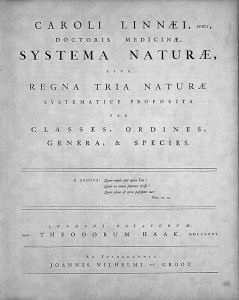 The Lunar New Year has rolled around again and there has been a week of celebration by way of gold and red dragons and sublime explosives rocketing into the sky for everyone’s enjoyment. Only, this time around, there seems to be a problem. It doesn’t quite seem like the English speaking world knows what year it is… sheep? Goat? Ram? Something else?
The Lunar New Year has rolled around again and there has been a week of celebration by way of gold and red dragons and sublime explosives rocketing into the sky for everyone’s enjoyment. Only, this time around, there seems to be a problem. It doesn’t quite seem like the English speaking world knows what year it is… sheep? Goat? Ram? Something else?
This was especially obvious to me when travelling internationally recently because the various airports I transited through had all seemingly decided by random ballot whether it was the year of the goat or sheep. I finally decided I needed to settle the issue… or rather I needed to search the filamentous gossamers of the world wide web and find someone else who has already sorted it out and eagerly quoth them.
I found a great discussion about this confusion over at CJV. It turns out that in Chinese the current celestial year is identified with the yáng. But things get a bit complicated from here on in… the word yáng refers not just to sheep and goats, but antelope too… and it seems more or less any ruminant in the general sheepish-looking group is a yáng.
The yáng (羊) is modified to denote species. A goat is a shānyáng (mountain yáng), a sheep is a miányáng (cotton yáng) and a gazelle/antelope is a língyáng.
So the Chinese don’t really draw a distinction between sheep and goats. It can be either, or antelope if you really want to be different. But what about other cultures? In Mongolia, Japan and Vietnam the languages do distinguish between goats and sheep. This is definitely the Year of the Sheep in Mongolia. This is also the situation in Japan, where there is no question that it’s the Year of the Sheep. However, in Vietnam, where the weather is a bit hot for flocks of sheep, it is quite definitely the Year of the Goat. It Korea it can evidentially go either way, much like China, but the ‘prototypical’ image of the celestial calendar in Korea is a sheep.
Obviously, this could be confusing, but luckily for us we have the Linnaean system of taxonomy, established by naturalist Carl Linnaeus in his Systema Naturae (1735). Although antelopes are actually in the Subfamily Bovinae, I think we can mostly disregard antelopes. Not a single airport I passed through recently declared it to be the Year of the Antelope (but you can if you want to; you won’t be technically wrong). That leaves us with goats and sheep both of which belong to the Subfamily Caprinae.
So, happy Year of the Subfamily Caprinae everyone! If you check outside there might still be some fireworks.


As I was born in the year of the sheep (or goat) I always wondered which it really was. Interestingly, the argali, a wild sheep from Central Asia, looks like a sheep and a goat and an antelope. No, really! Look at this thing http://images.world66.com/ar/ga/li/argali_wild_sheep_galleryfull
I find it fascinating how the richness of words for a particular thing in a language gives us an idea of the importance of that particular thing to a particular people at a particular time.
Having just come out of Old English class I was in the mood to go checking up on goats and sheep. In doing so I came across some lovely words.
Gat – goat
Gat bucca – he-goat
Hæfer – he-goat
Ræge – she-goat, roe
Firgen gat – mountain goat
Stan bucca – mountain goat
Wudu bucca/gat – wild goat
Language is a gorgeous thing.
As I may’ve mentioned, until I was about 25 I thought that the goat was the male sheep. It turns out it’s a whole other animal
The argali does look like a sheep-goat-antelope. The year of the argali it is.